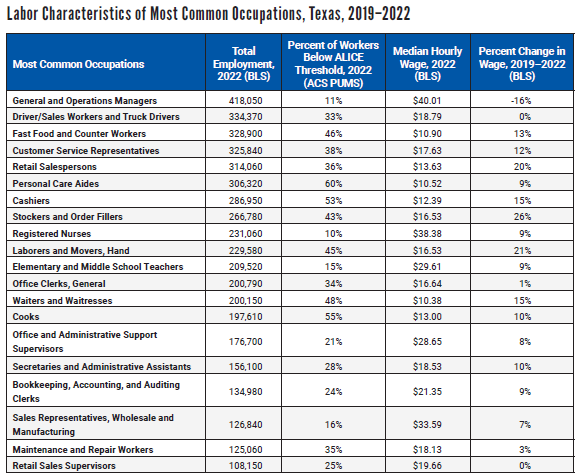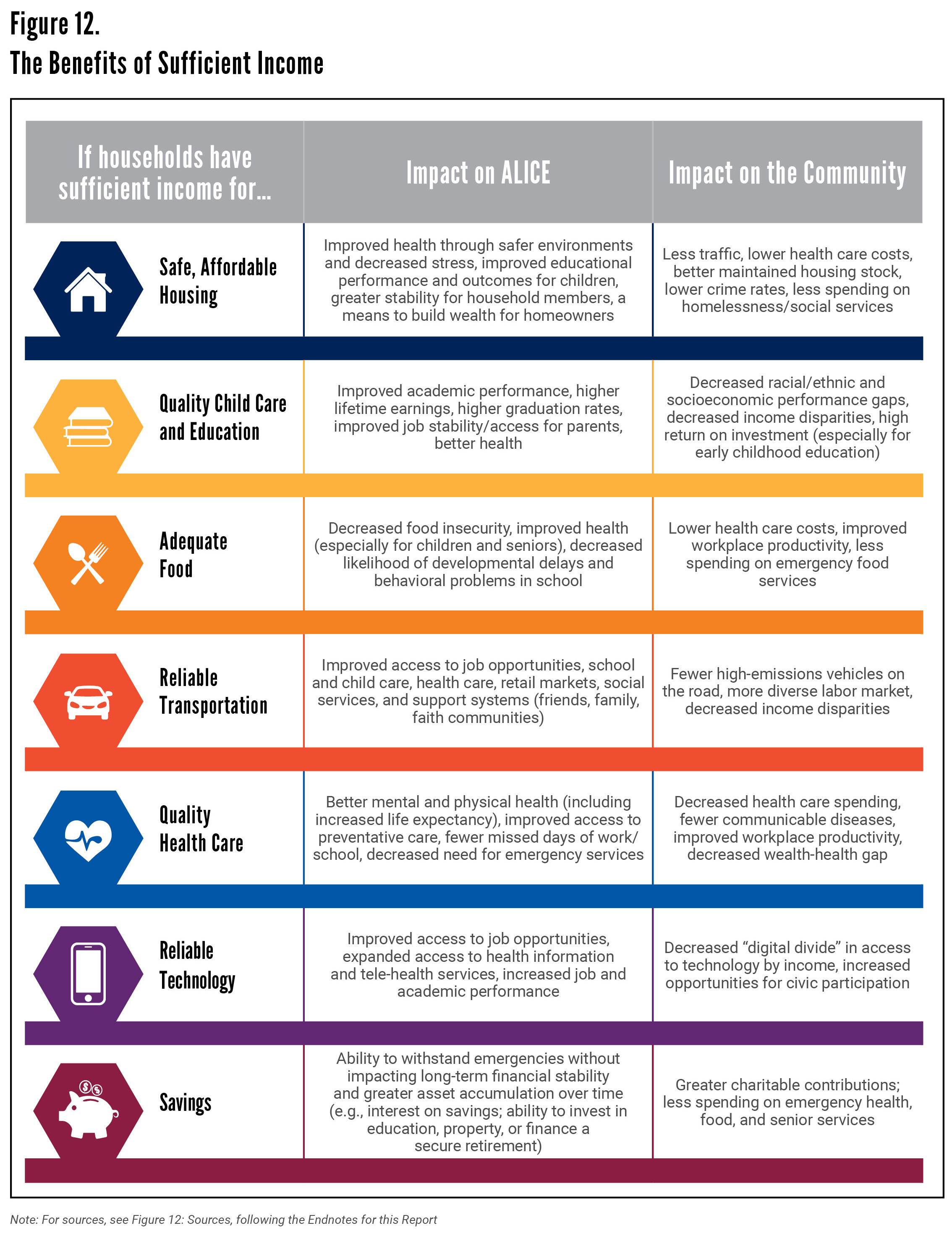Understanding ALICE in Texas
ALICE stands for Asset Limited, Income Constrained, Employed — hardworking individuals who play a vital role in our communities. They are the teachers who educate our children, the healthcare workers who keep us healthy, and the service workers who enhance our daily lives. Yet, despite their contributions, ALICE households often struggle to cover basic needs, forced to make tough choices like choosing between quality childcare and paying rent. These difficult decisions have lasting consequences not only for ALICE families but for society as a whole.
The State of ALICE in 2022
In 2022, financial hardship in Texas remained significantly undercounted by traditional measures, shaped by the economic aftershocks of the pandemic, rising inflation, wage growth, and the expiration of pandemic-related public assistance programs. These factors combined to leave many households below the ALICE Threshold of Financial Survival:
- Total households in Texas grew by 208,120 (up 3%).
- Households in poverty increased by 32,679 (up 2%).
- ALICE households increased by 116,891 (up 4%).
Out of the 10,985,596 households in Texas, 14% were in poverty, and 29% were classified as ALICE. That’s a staggering 43% of households — 4,708,860 families — struggling to make ends meet.
Wage Growth and Challenges
From 2019 to 2022, wages for the lowest-paid jobs across the U.S. grew at the fastest rate since 1979. In Texas, this was driven by a tight labor market where workers reevaluated their employment options and employers had to offer higher wages to attract talent. However, Texas has not raised its minimum wage from $7.25 since 2010, and while wages for low-income jobs increased, they were not enough to compensate for years of stagnant pay and rising costs.
In 2022:
- 70% of the 20 most common occupations in Texas paid less than $20 per hour.
- 35% of workers in these occupations lived below the ALICE Threshold.
- Occupations with the largest share of ALICE workers included personal care aides, cooks, cashiers, waitstaff, and fast-food workers.
These statistics highlight the urgent need to address the financial challenges faced by ALICE households and ensure that hardworking Texans can achieve long-term stability and success.


